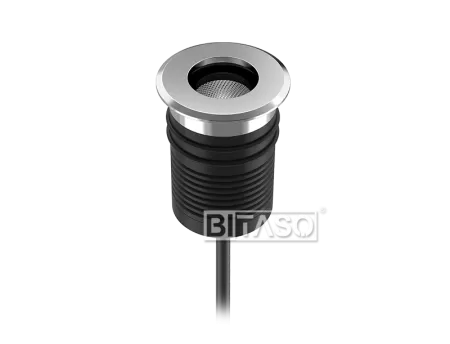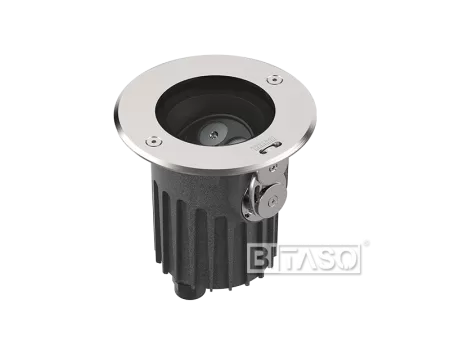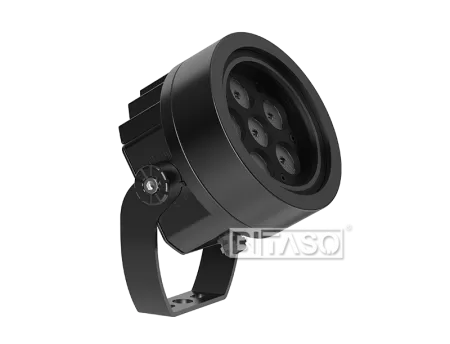Oct. 29, 2024
Illumination is vital for creating the right ambiance and functionality in any space. When selecting LED downlights and spotlights, one often overlooked yet essential factor is the beam angle. The beam angle dictates how light is spread and directed by the fixture, affecting the coverage area, intensity, and overall lighting effect. Whether you're designing a cozy living room, a functional kitchen, or an art gallery, choosing the right beam angle is crucial for enhancing both the visual appeal and usability of the environment.
In the past year, we always distinguished downlights and spotlights by the angle of light. Nowadays, with the development of optical technology, even the same luminaire can achieve a variety of lighting angles.
The beam angle refers to the angle at which light is emitted from an LED fixture, typically measured in degrees. It indicates the width of the cone of light produced by the fixture. A narrower beam angle focuses light on a specific area, while a wider beam angle disperses light across a larger surface.
1. Room Size and Layout: The dimensions and configuration of the room are crucial in choosing the right beam angle. In larger spaces, wider beam angles (around 60 degrees or more) are often preferred to achieve even light coverage. In smaller areas, narrower beam angles (around 30 degrees) can create focused pools of light.
2. Ceiling Height: The height of the ceiling affects light distribution. Higher ceilings may necessitate a narrower beam angle to ensure adequate illumination reaches the desired surfaces, while lower ceilings might benefit from a wider beam angle for more uniform lighting.
3. Task or Accent Lighting: Consider the primary function of the lighting. For task lighting, such as kitchen countertops or office desks, a narrower beam angle provides concentrated illumination. In contrast, for accent lighting—like highlighting artwork or architectural features—a spotlight with a narrower angle can effectively draw attention.
4. Ambiance and Mood: The beam angle adjustable light significantly affects the mood and ambiance of a room. A narrow beam angle can create dramatic pools of light and shadow, perfect for establishing a cozy and intimate atmosphere. In contrast, a wider beam angle provides softer, more diffused lighting, making it suitable for general illumination or relaxed settings.
5. Art and Décor: When highlighting specific objects, decorations, or artwork, a spotlight with a narrow beam angle can effectively direct attention to desired focal points.
6. Fixture Adjustability: Some fixtures feature adjustable beam angles, allowing you to tailor the lighting to meet changing needs or the specific function of the room.
7. Combining Beam Angles: For a comprehensive lighting solution, consider using a mix of fixtures with varying beam angles. This layered approach enhances both functionality and aesthetics in your space.
Narrow Beam Angle (8°–25°): This angle is ideal for accent lighting, as it effectively highlights specific objects, decorations, or display areas. Use narrow beam angles to create focal points in a room, drawing attention to artwork, architectural features, or retail displays.
Medium Beam Angle (30°–45°): This range is suitable for localized lighting, also known as indirect lighting. It can create the illusion of a higher ceiling by directing light against the walls, reducing any sense of confinement in a space. Medium beam angles still offer a moderate focusing effect from various angles, making them versatile for areas such as corridors or smaller rooms.
Wide Beam Angle (50°–60°): Wide beam angles are perfect for ambient lighting, providing even illumination across larger areas. This angle is ideal for spacious environments, such as living rooms or dining areas, where diffuse light can create a welcoming atmosphere. They work well with standard ceiling heights to cover expansive areas effectively.
Beam Angles Over 60°: In large commercial spaces such as shopping centers, plazas, and similar venues that require extensive lighting coverage, wide-angle spotlights can ensure uniform light distribution. This creates a pleasant shopping experience and enhances events for customers.
Beam Angles Over 90°: Downlights with a beam angle exceeding 90 degrees are ideal for settings that necessitate broad and even illumination, such as halls, corridors, galleries, and museums. These spaces often showcase artworks or performances, requiring prominent lighting to highlight these features. Additionally, varying scene requirements lead to differences in light distribution, with the beam angle significantly influencing the overall effect.
When selecting the beam angle for LED downlights, it’s important to recognize the differences between residential and commercial applications based on their unique needs and priorities. Consider the specific lighting objectives, the areas to be illuminated, and the desired effects for each space. By thoughtfully assessing these factors, you can select the appropriate lighting angle that meets the specific requirements of the scene, whether it’s creating a warm, inviting atmosphere at home or ensuring functional lighting in a commercial environment.
In homes and apartments, which often feature lower ceilings and smaller spaces, the lighting design focuses on creating a comfortable atmosphere. A wider beam angle, typically between 45° and 60°, can provide uniform illumination, fostering a warm and inviting ambiance. On the other hand, a narrower beam angle can effectively highlight specific objects or details, such as artwork, bookshelves, and decorative pieces.
For larger areas like living rooms, using an ultra-wide beam angle of 60° to 90° can ensure adequate lighting while minimizing the number of fixtures needed.
Additionally, don’t overlook the importance of accent and task lighting. Combining these with general illumination can create a practical and aesthetically pleasing lighting environment that enhances the overall comfort of your home.
Commercial lighting differs significantly from residential lighting due to the complexity of the environments involved, which include hotels, offices, specialty stores, restaurants, clothing shops, shopping malls, and warehouses.
In commercial applications, there is a greater emphasis on task lighting for specific areas, such as merchandise display zones in retail stores and workspaces in offices. A narrower beam angle is often preferred as it concentrates light, effectively highlighting and enhancing the illumination of targeted areas. This approach not only improves visibility but also draws attention to products or workspaces, creating a more engaging and functional environment.
Hotel: In areas such as hotel lobbies, restaurants, and other spaces with ceiling heights greater than 6 meters, LED downlights are particularly appealing due to their large size, high power, and broad beam angles. An ultra-wide beam angle of 90° is ideal for achieving a high level of uniformity in these sophisticated environments.
Clothing Store: Accent lighting is essential in retail settings, particularly for merchandise displays, signage, and cashier areas. A narrow beam angle of 10° to 20° or a wide beam angle of 24° to 45° is recommended. For spaces with heights ranging from 3 to 12 meters, downlights with beam angles of 15°, 24°, 36°, 45°, or 60° are suitable. In locations where uniformity is crucial and installation distances are significant, downlights with a 90° beam angle should be considered.
Previous: How to Elevate Outdoor Spaces with Architectural Outdoor Lighting
Next: What Are Adjustable Inground Lights and How to Use Them
Hot Products

DIAMOND D38 SMD
Luminaures with CREE COB or XP-E/G LEDS provide excellent light quality with highly precise light distribution,free of colour shifts and dis-tortion,special PCB layouts ensure the led moudules are optimally matched to the optical system of the luminaires.

EARTHA D135 SMD Beam Angle Adjustable Uplight
Beam Direction Adjustable In-Ground Light D135 SMD Outdoor 6W-12W DC48V

MILESTONE D120 SMD Bracket
Surface Architectural Floodlight Milestone D120 SMD Bracket 15-24W
Contact Us
E-mail: sales@bitaso-lite.com
Tel.: +86 758 2801 266
Phone: +86 186 2047 1396
Add.: No.308, Lianhai Rd., Jianghai District, Jiangmen City, GD.P.R. China